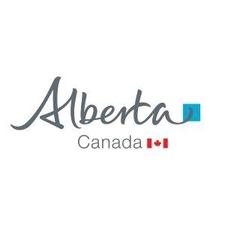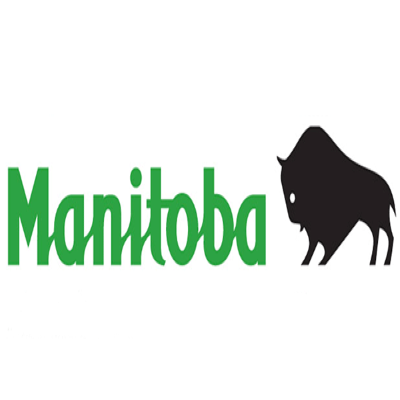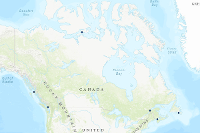ESRI REST
Type of resources
Available actions
Topics
Keywords
Contact for the resource
Provided by
Formats
Representation types
Update frequencies
status
-
Historical finds of Fenusa pumila
-

The Integrated Resource Plan - Local dataset is comprised of all the polygons that represent the Local Integrated Resource Plans (IRP) in Alberta. A Local IRP provides land resource management direction for a relatively smaller geographic planning area. A Local Plan is developed to provide more detailed land and resource use parameters than may be available in a Sub-Regional Plan. An IRP is a plan which identifies the values and associated land and resource management goals for the planning area in consideration of the maintenance of social, economic, and ecological values. An IRP provides direction regarding the type of land and resource management activity that would facilitate meeting the stated objectives in the planning area (e.g. recreation, grazing, industrial and commercial activities). The public was often involved in contributing input to the development of an IRP. IRPs were endorsed by the Government of Alberta in various periods.
-

Tile layer of private, managed forest code 50 used in the Story Map of Forest Management in Canada, 2017. Tile layer of private, managed forest code 50 used in the Story Map of Forest Management in Canada, 2017. Private lands were identified using provincial and territorial land ownership datasets. Detailed ownership datasets were not available in all jurisdictions, so proxies were used where necessary. In Saskatchewan, lands south of the province's Commercial Forest Zone were classified as Private. This includes some Crown lands, but these are generally small and not included in forest management plans or leased for commercial forestry purposes. Data provided by Alberta Agriculture and Forestry; British Columbia Ministry of Forests; Manitoba Sustainable Development; Natural Resources Canada; New Brunswick Department of Energy and Resource Development; Newfoundland & Labrador Department of Fisheries and Land Resources; Northwest Territories Department of Environment and Natural Resources; Nova Scotia Department of Lands and Forestry; Ontario Ministry of Natural Resources and Forestry; Prince Edward Island Department of Communities, Land & Environment; Québec Ministère des Forêts, de la Faune et des Parcs; Saskatchewan Ministry of Environment; and Yukon Energy, Mines and Resources.
-

Manitoba's forest boundaries datasets in 2021. This data is used within Manitoba's Five Year Report on the Status of Forestry, 2016 - 2021 story map. Manitoba's forest boundaries datasets in 2021. This data is used within Manitoba's Five Year Report on the Status of Forestry, 2016 - 2021 story map. The forest boundaries included represent forest sections, forest management units, provincial forests and forest management license areas.
-

Canadas Managed Forests 2017 Albers Equal Area Canada's Managed Forests 2017 Albers Equal Area
-
Concentrations of sea pens, small and large gorgonian corals and sponges on the east coast of Canada have been identified through spatial analysis of research vessel survey by-catch data following an approach used by the Northwest Atlantic Fisheries Organization (NAFO) in the Regulatory Area (NRA) on Flemish Cap and southeast Grand Banks. Kernel density analysis was used to identify high concentrations. These analyses were performed for each of the five biogeographic zones of eastern Canada. The largest sea pen fields were found in the Laurentian Channel as it cuts through the Gulf of St. Lawrence, while large gorgonian coral forests were found in the Eastern Arctic and on the northern Labrador continental slope. Large ball-shaped Geodia spp. sponges were located along the continental slopes north of the Grand Banks, while on the Scotian Shelf a unique population of the large barrel-shaped sponge Vazella pourtalesi was identified. The latitude and longitude marking the positions of all tows which form these and other dense aggregations are provided along with the positions of all tows which captured black coral, a non-aggregating taxon which is long-lived and vulnerable to fishing pressures.
-

Launched in 2017, the Cumulative Effects of Marine Shipping (CEMS) initiative is part of Canada’s $1.5 billion Oceans Protection Plan, which is providing economic opportunities to Canadians today, while protecting our coasts and waterways for future generations. The Cumulative Effects of Marine Shipping initiative is another way that the Government of Canada is protecting our coasts and waterways. https://tc.canada.ca/en/marine-transportation/marine-pollution-environmental-response/cumulative-effects-marine-shipping As part of this initiative, Transport Canada is working with Indigenous partners and stakeholders in six pilot areas across Canada. Together, we are trying to understand the effects of marine shipping in various coastal areas. These pilot areas include: - North Coast British Columbia - South Coast British Columbia - St. Lawrence and Saguenay Rivers, Quebec - Bay of Fundy, New Brunswick and Nova Scotia - Placentia Bay, Newfoundland - Cambridge Bay, Nunavut
-

Polygons denoting concentrations of sea pens, small and large gorgonian corals and sponges on the east coast of Canada have been identified through spatial analysis of research vessel survey by-catch data following an approach used by the Northwest Atlantic Fisheries Organization (NAFO) in the Regulatory Area (NRA) on Flemish Cap and southeast Grand Banks. Kernel density analysis was used to identify high concentrations and the area occupied by successive catch weight thresholds was used to identify aggregations. These analyses were performed for each of the five biogeographic zones of eastern Canada. The largest sea pen fields were found in the Laurentian Channel as it cuts through the Gulf of St. Lawrence, while large gorgonian coral forests were found in the Eastern Arctic and on the northern Labrador continental slope. Large ball-shaped Geodia spp. sponges were located along the continental slopes north of the Grand Banks, while on the Scotian Shelf a unique population of the large barrel-shaped sponge Vazella pourtalesi was identified. The latitude and longitude marking the positions of all tows which form these and other dense aggregations are provided along with the positions of all tows which captured black coral, a non-aggregating taxon which is long-lived and vulnerable to fishing pressures. These polygons identify sea pen fields from the broader distribution of seapens in the region as sampled by Alfredo trawl gear in the Eastern Arctic biogeographic zone. A 0.25 kg minimum threshold for the sea pen catch was identified as the weight that separated the sea pen field habitat from the broader distribution of sea pens with these research vessel tow data and gear type.
-

Polygons denoting concentrations of sea pens, small and large gorgonian corals and sponges on the east coast of Canada have been identified through spatial analysis of research vessel survey by-catch data following an approach used by the Northwest Atlantic Fisheries Organization (NAFO) in the Regulatory Area (NRA) on Flemish Cap and southeast Grand Banks. Kernel density analysis was used to identify high concentrations and the area occupied by successive catch weight thresholds was used to identify aggregations. These analyses were performed for each of the five biogeographic zones of eastern Canada. The largest sea pen fields were found in the Laurentian Channel as it cuts through the Gulf of St. Lawrence, while large gorgonian coral forests were found in the Eastern Arctic and on the northern Labrador continental slope. Large ball-shaped Geodia spp. sponges were located along the continental slopes north of the Grand Banks, while on the Scotian Shelf a unique population of the large barrel-shaped sponge Vazella pourtalesi was identified. The latitude and longitude marking the positions of all tows which form these and other dense aggregations are provided along with the positions of all tows which captured black coral, a non-aggregating taxon which is long-lived and vulnerable to fishing pressures. These polygons identify sponge grounds from the broader distribution of sponges in the region as sampled by Western II A trawl gear in the Scotian Shelf biogeographic zone. A 2 kg minimum threshold for the sponge catch was identified as the weight that separated the sponge ground habitat from the broader distribution of sponges with these research vessel tow data and gear type.
-

Tile layer of short-term tenure, managed forest code 12 used in the Story Map of Forest Management in Canada, 2017. Tile layer of short-term tenure, managed forest code 12 used in the Story Map of Forest Management in Canada, 2017. Short-Term Tenure areas are lands having shorter-term volume- or area-based tenure. Tenure arrangements can be overlapping. Lands with both long- and short-term tenures are classified as Long-Term Tenure (Code 11). Data provided by Alberta Agriculture and Forestry; British Columbia Ministry of Forests; Manitoba Sustainable Development; Natural Resources Canada; New Brunswick Department of Energy and Resource Development; Newfoundland & Labrador Department of Fisheries and Land Resources; Northwest Territories Department of Environment and Natural Resources; Nova Scotia Department of Lands and Forestry; Ontario Ministry of Natural Resources and Forestry; Prince Edward Island Department of Communities, Land & Environment; Québec Ministère des Forêts, de la Faune et des Parcs; Saskatchewan Ministry of Environment; and Yukon Energy, Mines and Resources.
 Arctic SDI catalogue
Arctic SDI catalogue